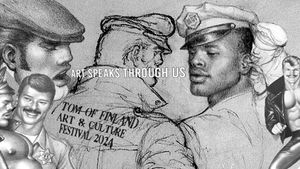At a passing glance, it would seem as if gay men in America were on top of their game. After all, gay characters are more visible in the media than ever, public opposition to homosexuality has drifted into minority status, and same-sex marriage isn’t just a geographical privilege, but a national right.
But while the mainstream status of the young gay man has drastically improved, the status of his sexual health isn’t looking so good. A new research analysis organized by the Strategic Multisite Initiative for the Identification, Linkage and Engagement in Care of HIV infected youth (SMILE) reported that young people ages 13 to 24 now account for a quarter of new HIV infections, with only 7 percent of youth in the study reaching undetectable viral levels after diagnosis. This number, which is far below the national undetectable average of 30 percent, gives insight as to why HIV infection is up 132.5 percent among young gay men in the same age range over the past decade.
This stain on the gay rights report card demonstrates a glaring omission in our advocacy work. While we have been teaching young gay men the importance of business, family, and law, sexual health has been all but omitted from the curriculum.
In honor of the 7 percent, here are seven ways we are failing young gay men in America.
1. A lack of same-sex, safe-sex education.
Since sex education materials often assume that a student is heterosexual, there is no such thing as same-sex sex education in the public school system, and there is also little political momentum to include it. And without an active safe-sex message being blasted from the rooftops of the gay community, young men are forced to figure it out through trial and error. With gay youth coming out at younger and younger ages, we must prepare them for safe sex as soon as they start thinking about it.
2. Shame from older generations.
Wherever there is media content on HIV, there is a group of older men who chastise young people for not “knowing better.” Since many of these young men were born at the same time or after the first protease inhibitor was released to treat HIV, we can hardly expect them to just “know.” Furthermore, such shaming can often lead someone who is newly positive to hide their status, retreat from any discussions about HIV, and even avoid medical treatment for fear of being “found out.” Frankly, it’s the older gay men who should “know better” by not chastising, but rather by educating and helping the younger generations of gay men to understand the risks and dangers of contracting a virus that stays with you forever.
3. The widespread belief that HIV is “someone else’s problem.”
Save for the advocates of pre-exposure prophylaxis, a.k.a. PrEP, it can often seem as if the only people who are concerned with safer sex are people who are already HIV-positive. That is because many gay men tend not to believe that HIV-related content relates to them, even though an estimated one out of five gay men are living with the virus. No matter who you are, all gay men are affected by HIV. But the muted nature of discussions on HIV in the gay community has led to a false belief that HIV is the problem of “other people.”
4. The misconconception that young people “just don’t care if they get it.”
There is an annoying but persistent sentiment that older generations have about younger gay men and their relationship with HIV. It is that young gay men know about their risks but just don’t care if they catch it or not. But how could they know about said risks if they have never been educated about them? An 18-year-old gay man was born in 1997, three years after the death of MTV star and HIV pioneer Pedro Zamora. There is no longer any HIV presence in pop culture, nor is there even one HIV-positive role model close to their age. So no, they do not know the risks of HIV, which is why they aren’t concerned with contracting it.
5. Half-baked marketing.
Safe-sex messaging still has a major presence in the gay community, but it can often be so vague that it barely makes an impact. Slogans like “know your status” and “get tested” are great, but they fail to connect with the young guy who receives an HIV-positive result. There is a general hesitance to portray the lives of HIV-positive people as happy and healthy for fear of glamorizing the disease, but this hesitancy often leaves newly positive individuals with few examples of how to live their lives well.
6. The “Truvada whore” stigma.
When HIV first began to spread in the ’80s, the last thing a young gay man needed was a lesson in morality. Yet that is exactly what the gay community received. There was a general public tone of “that’s what you get” that permeated HIV messaging, until it began to pop up in the heterosexual population. Today, something similar is happening with the use of Truvada for HIV prevention in the strategy known as PrEP, except the lesson in morality is often coming from the gay community itself. Instead of arming young gay men with the tools they need to protect themselves from infection, medical practitioners and activists have spent the past three years arguing over whether this younger population is responsible enough to take PrEP, if they were already careless enough to have condomless sex.
7. A failure to prioritize HIV activism.
I think we can all agree that the fight for marriage equality was way more fun than the fight against HIV. So after the medications improved and people could live if they really wanted to, gay rights shifted from the right to live to the right to live happily ever after. In fact, it was fairly recent that the Human Rights Campaign, America’s largest LGBT rights group, even included HIV awareness and sexual health in its programming.
Thirty years after it emerged, HIV is still a major problem in the gay community. But what was once a fight to get mainstream society to recognize a virus that was killing us has now evolved into an internal battle over the equality of HIV status. In order for these young gay men to stay in care and achieve undetectable viral levels, they must see that the gay community values their health and embraces them for who they are, regardless of their HIV status.
















































































